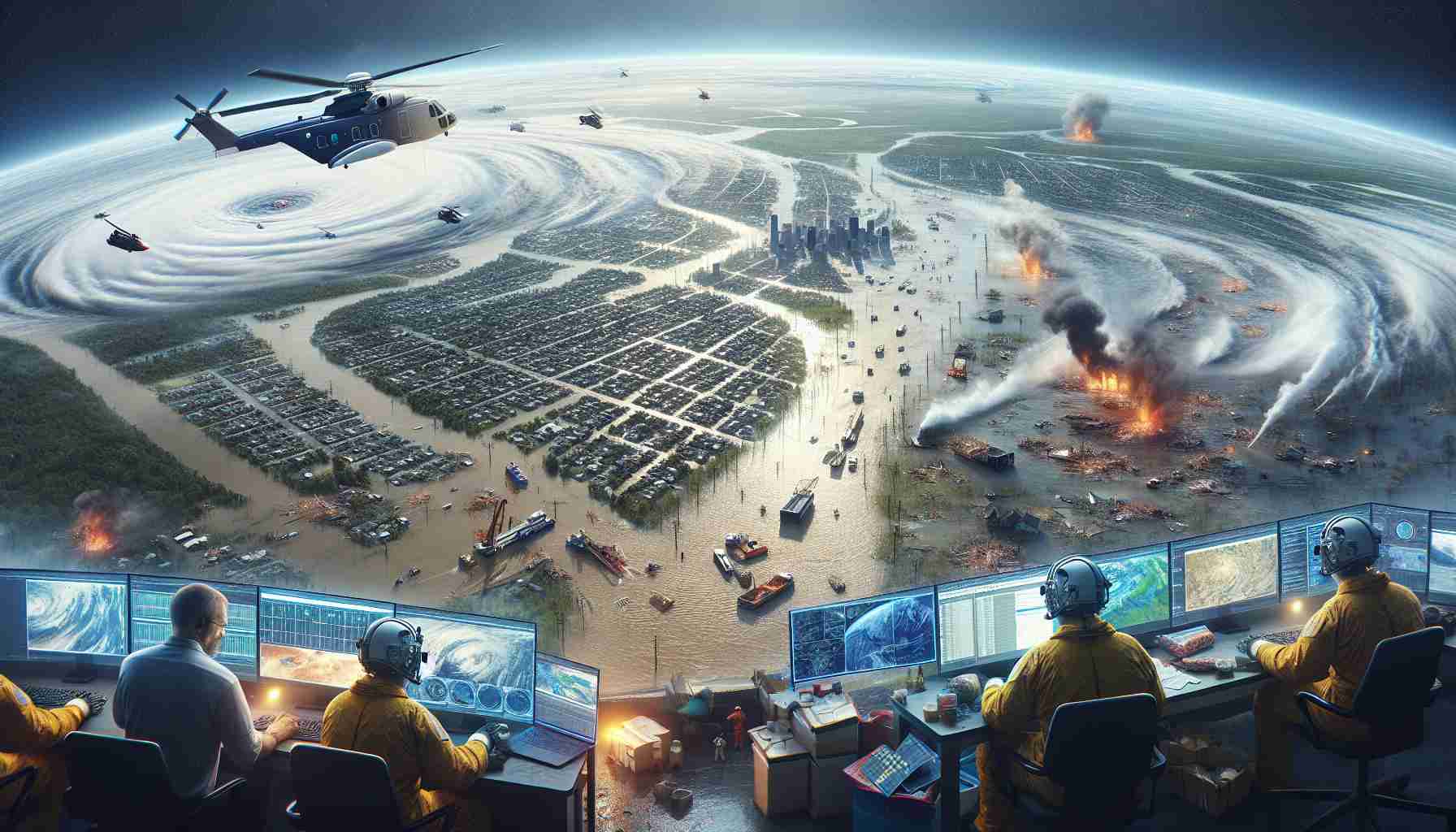
In the aftermath of Hurricane Milton, NASA has mobilized its resources to assist state and federal agencies, particularly FEMA, in managing disaster response efforts. Utilizing advanced satellite and aerial technologies, NASA began its operations on Friday to enhance situational awareness regarding flooding and structural damage throughout Florida.
The director of NASA’s Earth Sciences Division highlighted the agency’s immediate response following the dual devastation from Hurricanes Helene and Milton. She emphasized NASA’s commitment to providing timely and actionable data from both space and aerial views, aimed at assisting affected communities. The agency’s coordinated efforts are designed to offer comprehensive updates on the evolving conditions on the ground.
Using sophisticated tools such as the Uninhabited Aerial Synthetic Aperture Radar Vehicle, NASA is gathering crucial radar data that can penetrate cloud cover. This capability is especially vital given that post-storm conditions have hindered optical satellite observations. These radar insights significantly aid emergency responders by providing clear images of flood levels and the movement of water across regions.
Throughout the response, NASA’s Disaster Response Coordination System is collaborating closely with organizations like the U.S. Geological Survey and the American Red Cross. The ongoing assessment of the storm’s impact is facilitating essential resource distribution, including backup generators, to areas in desperate need as the situation unfolds. By sharing valuable data through its mapping portal, NASA plays a pivotal role in disaster recovery across Florida.
Navigating the Aftermath of Hurricane Milton: NASA’s Critical Role
In the wake of Hurricane Milton, a powerful storm that left a trail of damage across Florida, NASA has emerged as a key player in the recovery efforts. The agency not only provides state-of-the-art satellite imagery and data but is also engaged in active collaboration with multiple federal and local agencies to ensure a comprehensive response to the disaster.
What are the key contributions of NASA in disaster response?
NASA utilizes its advanced technologies, including the Earth Observing System Data and Information System (EOSDIS), which processes data from multiple satellites to provide real-time updates on changing conditions. This information is crucial for emergency responders as it helps them make informed decisions quickly.
What challenges does NASA face in the aftermath of hurricanes?
One of the primary challenges is the limitation of real-time data due to extensive cloud cover following hurricanes. While radar technology like Synthetic Aperture Radar (SAR) is effective, there are still gaps in temporal resolution that can hinder timely assessments. Additionally, NASA faces logistical challenges in resource coordination, particularly in remote or hard-hit areas.
How does NASA’s approach to data-sharing impact state and local agencies?
NASA’s partnership with FEMA and local agencies allows for seamless data sharing that enhances situational awareness and operational effectiveness. The use of platforms like the Near Real-Time (NRT) data feeds enables agencies to access critical information quickly. However, there can be a learning curve for local agencies unfamiliar with interpreting satellite data effectively.
What are the advantages and disadvantages of NASA’s involvement in disaster response?
The advantages of NASA’s engagement during disasters include access to cutting-edge technology and a wealth of scientific expertise that aids in recovery efforts. The data gathered helps in assessing structural damage, identifying vulnerable areas, and planning resource allocation efficiently.
Conversely, the disadvantages may arise from potential bureaucratic hurdles; agencies may experience delays in inter-agency communication. Moreover, reliance on technology can sometimes overlook the immediate human and emotional needs of affected communities.
In what ways does NASA prepare for future disasters?
NASA’s approach includes extensive pre-hurricane simulations and modeling to predict potential damage and response strategies. By analyzing historical data and storm behavior, NASA works to enhance its preparedness for future events, which involves community engagement and training for local agencies in using the technology effectively.
What are some ongoing collaborations following Hurricane Milton?
Apart from FEMA, NASA continues to work with organizations like the National Oceanic and Atmospheric Administration (NOAA) and various nonprofit entities focused on disaster recovery. These collaborations aim to fortify community resilience and improve long-term recovery strategies.
Conclusion
Hurricane Milton’s aftermath highlights NASA’s indispensable role in disaster response. While challenges remain, the agency’s innovative technologies and partnerships provide critical insights that facilitate recovery efforts across the affected regions. Moving forward, continued collaboration and technological advancements will be essential in mitigating the impacts of future natural disasters.
For more information on NASA’s Earth Science research and ongoing projects, visit NASA Earth Science.



